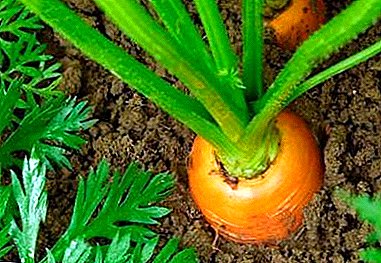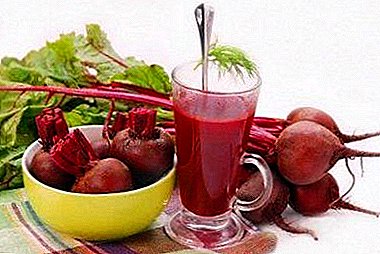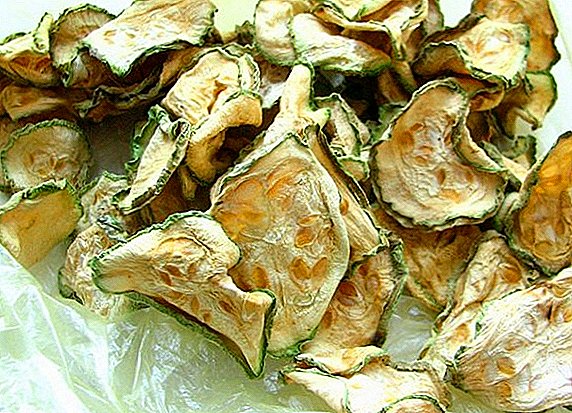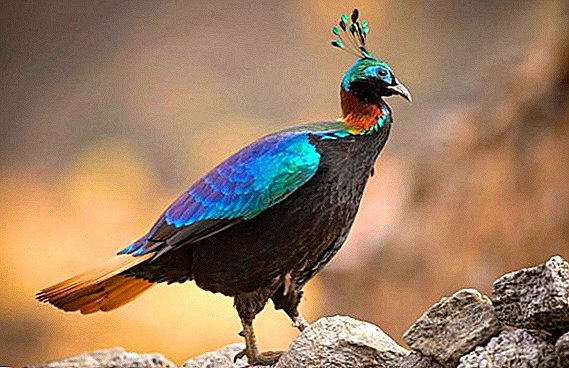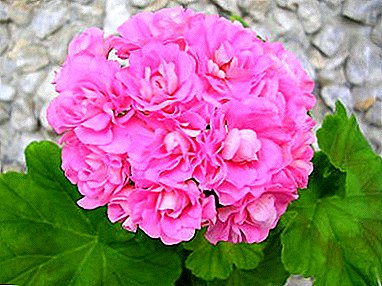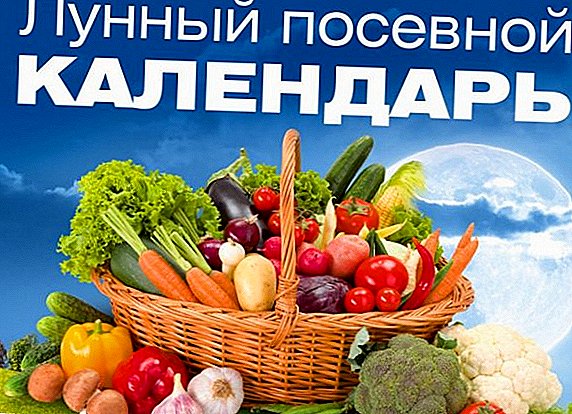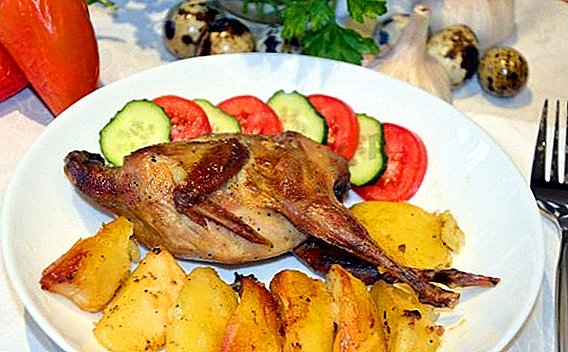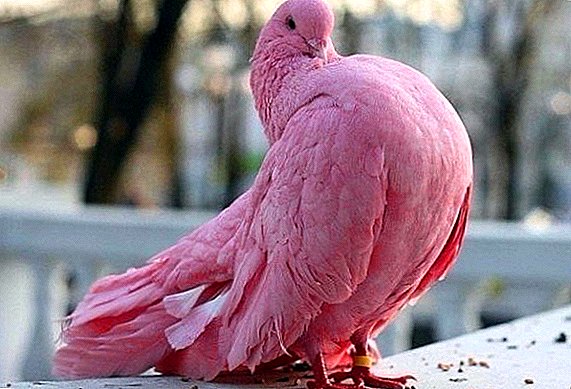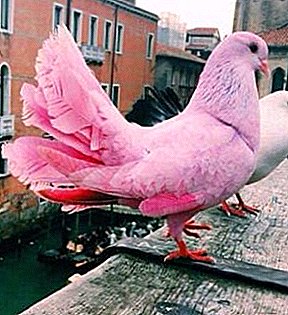 At weddings or in the circus, you can often see pink pigeons - this is not a natural color, it is obtained with the help of food dyes, which are applied to the plumage of the bird.
At weddings or in the circus, you can often see pink pigeons - this is not a natural color, it is obtained with the help of food dyes, which are applied to the plumage of the bird.
In nature, pink pigeons do exist, but their color is completely different.
How they look - we will tell further.
Description and appearance
The main color of this bird's feather is white with a slight pinkish tinge. The wings are painted gray, also with a pink tint. The tail plumage is brown. More saturated pink color (with a reddish shade) have a beak, paws and a ring around the eyes. 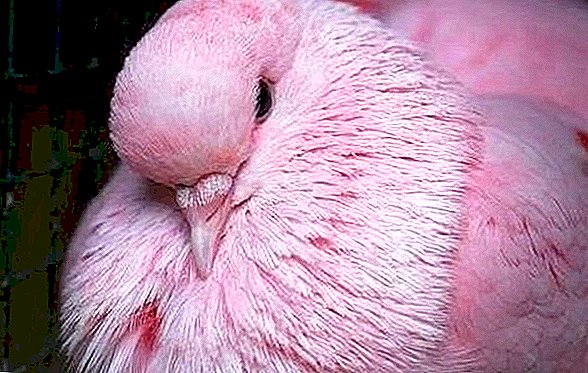 At length, the bird reaches 36-38 centimeters and weighs 320-350 grams. A small round head rests on the neck of medium length. The bill is strong, slightly thickened, on the tip it is lighter than at the base. Paws - strong, with three long and one short finger, ending with sharp claws. Eyes - dark brown or dark yellow.
At length, the bird reaches 36-38 centimeters and weighs 320-350 grams. A small round head rests on the neck of medium length. The bill is strong, slightly thickened, on the tip it is lighter than at the base. Paws - strong, with three long and one short finger, ending with sharp claws. Eyes - dark brown or dark yellow.
Did you know? In the countries of the Ancient East, killing a pigeon was considered a sinful act.
Lifestyles and habits
The pigeon lives 18-20 years. This applies to those individuals that live in zoos, as in the natural habitat of birds there are many enemies that can shorten their lives. In captivity, males live longer than females, which is why their number is much larger.
The pink dove has excellent flight data, but it does not fly over long distances. There is no need for this, since the climatic conditions of its habitat are almost unchanged throughout the year. 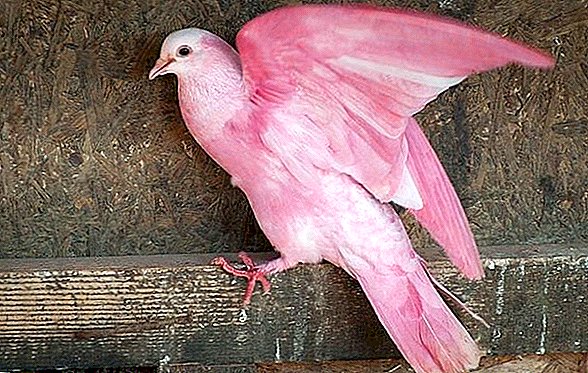 In the wild, pink pigeons live in small flocks that create for joint subsistence and existence. Together, the birds zealously defend their territory, protecting them from unexpected guests (even from congeners).
In the wild, pink pigeons live in small flocks that create for joint subsistence and existence. Together, the birds zealously defend their territory, protecting them from unexpected guests (even from congeners).
You will be interested to know what breeds of pigeons belong to the high-flying, to wild and forest, to multi-colored, to domestic, to the most unusual, to stately, to the postal, to meat.
Where dwells
The pink pigeon is endemic and is found in nature only on the island of Mauritius and the island of Egret, which lies southeast of Mauritius (it was specially brought here when they tried to restore the animal population). Prefers to live in mountain evergreen forests. Hiding in the thicket, where more greenery and vines.
What feeds on
In the natural environment, food for the birds are plants growing on the island. The diet includes buds, young shoots, foliage, flowers, fruits, seeds (it all depends on the plant and season). Since the pigeon eats the fruits and seeds of plants, it participates in their distribution, thereby preserving rare species and providing themselves with food.
Important! This bird diet allows you to save and replenish the number of plants endemic to the island.
Now, when pigeons are taken under protection, corn, wheat and other cereals have appeared on their menu. They receive these products at supplementary feeding points, which they visit when they feed the young. In zoos, their diet consists of a mixture of cereals, flakes of cereals, fruits, herbs, carrots. 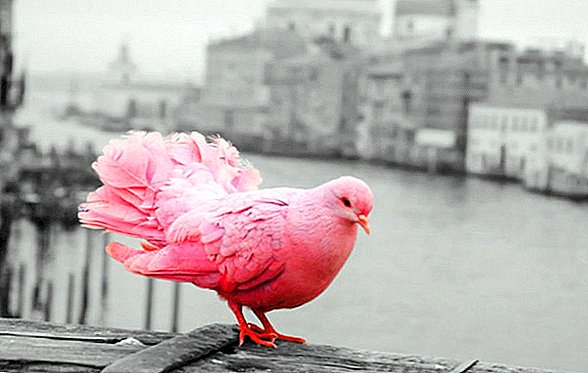 If there is an opportunity, then with pleasure enjoy the fresh greens and flowers.
If there is an opportunity, then with pleasure enjoy the fresh greens and flowers.
Breeding
The bird creates a monogamous pair for the breeding season. The mating season begins in August or September (in captivity, if the bird breeds, then the mating season is in its spring or summer). At this time, the couple begins to look for a place to build a nest.
Learn how to breed pigeons and how pigeons mate.
Males perform mating dances, similar to the dancing of ordinary pigeons: they stretch their necks, fan the goiter, and make cooing sounds, wooing the female.
When the dove responds to the male's courtship, mating occurs. Then the pair builds a nest: its construction is very fragile and loose, it looks like a platform built from branches.
On it the little dove lays two white eggs and proceeds to brooding. Interestingly, the pink dove sits on eggs at night and morning, and the male - at daytime. 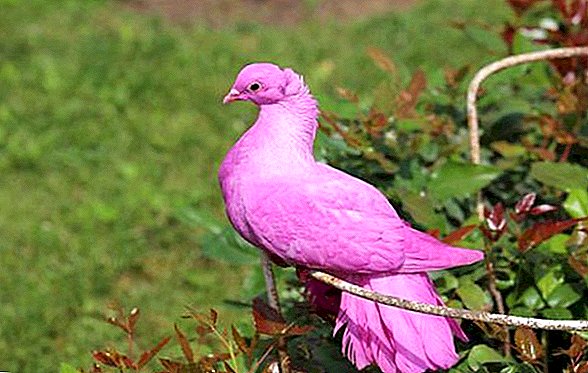 Two weeks later, blind chicks with a rare white fluff are born. They do not know how to eat on their own, so in the first days they feed on bird milk extracted from the goiter of their parents. It is the most valuable source of protein for a growing body.
Two weeks later, blind chicks with a rare white fluff are born. They do not know how to eat on their own, so in the first days they feed on bird milk extracted from the goiter of their parents. It is the most valuable source of protein for a growing body.
Did you know? In ancient times it was believed that witches can take on virtually any image, except for the image of a pigeon, a donkey and a sheep.
Growing up, the chicks begin to eat solid food, the proportion of which gradually grows in their diet. Completely from solid food the diet consists already on the 10th day of their life.
Young pigeons are able to leave the nest at the age of 3-4 weeks, but their parents continue to feed them for another 15-20 days. Also, young stock remains near the nest for several months. They become sexually mature next year.
Males are able to produce offspring until they reach the age of 10-11 years, females can breed up to 17-18 years old. 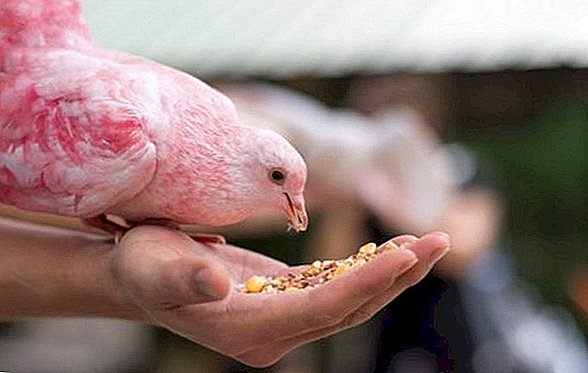
Population and conservation status
At the end of the XIX century, the pink pigeon was classified as a rare bird, the species numbered several hundred individuals. By the end of the 50s of the last century, the population was reduced to 40-50 heads. And in 1990 only ten lived in the wild.
Important! The threat to the pigeon population comes from macaques, mongooses, rats and feral cats that eat the clutches of birds. Therefore, despite all measures to restore the species, it is endangered.
Due to the sharp decline in the number of pigeons in 1977, it was decided to hold a series of measures to restore the poultry population. Responsible for them was the Darrell Wildlife Conservation Foundation.
Thanks to this program, the breeding of pigeons was done at the zoo on the island of Jersey (UK) and at the Black River Aviation in Mauritius - this gave a long-awaited result. 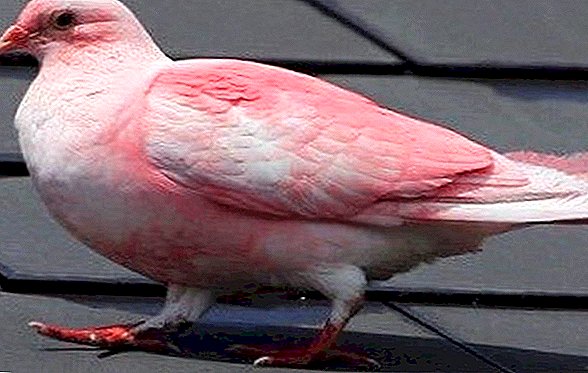 From imprisonment, birds began to be released into their natural habitat and in 2005 their numbers were at the level of 360-395 heads, 240-260 of them were adults.
From imprisonment, birds began to be released into their natural habitat and in 2005 their numbers were at the level of 360-395 heads, 240-260 of them were adults.
Scientists believe that now the pigeon will not be able to survive in its natural habitat if you stop the security and restoration activities (protection of the range from predators, reproduction in captivity). And the man who pollutes the environment, is engaged in deforestation, is guilty of this.
Therefore, in order to preserve the view, you need to make a lot of effort.



